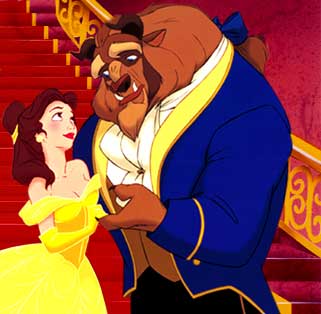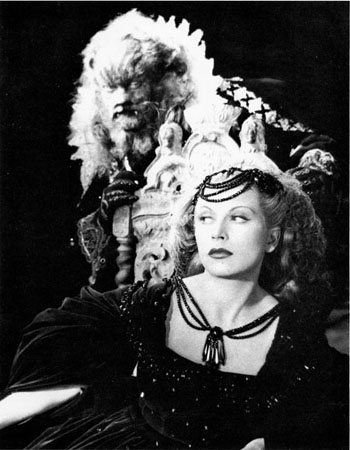Samurai I: Musashi Miyamoto, 1954, directed by Hiroshi Inagaki, screenplay by Hiroshi Inagaki and Tokuhei Wakao, from a play by Hideji Hojo, from a novel by Eiji Yoshikawa. That's my best guess at the writing credits; the novel predates the play, and although Hideji Hojo isn't credited in any of the essays I read about this movie, he is listed on the IMDB. The title is also kind of a best guess; that's the title the Criterion Collection gives the movie. The main character's name is Miyamoto Musashi; Miyamoto is his first name and Musashi is his family name (actually, the name in its entirety is an adopted one; Musashi is the name of his hometown). Anyway, for the sake of clarity, I'm going to use first name followed by last name for actors and characters; that's what the IMDB does.
Miyamoto Musashi. He was a historical character, and is featured in a number of Japanese movies; see here and here. A little bit about two of those movies: first, the 1954 version was not the first time Hiroshi Inagaki directed this movie—he also made a movie called Miyamoto Musashi, based on the same Eiji Yoshikawa novel, in 1940. Furthermore, like the 1954 version, it was the first part of a trilogy, all based on the novel. Unfortunately, it no longer exists; for some reason, the Japanese didn't keep prints of too many of their movies from 1940–1945. I can understand remaking a single movie, especially if the original is lost. So the point is that Hiroshi Inagaki was well prepared to make the 1954 version of Musashi Miyamoto, as he'd already done it 14 years earlier.1 The second point is that it's a mistake to call it "the 1954 version," because a rival studio made another movie called Musashi Miyamoto in 1954; it wasn't based on the novel but it was about the same character. Even more confusing, Rentaro Mikuni plays Miyamoto's friend Matahachi in Hiroshi Inagaki's movie. In the other Musashi Miyamoto, he plays Miyamoto himself. So he had leading roles, in the same year, of two movies about the same character and historical events.
So about that character, and those historical events. Toshirô Mifune (from Seven Samurai, and about eight billion other movies) plays Takezo, a crazy mixed-up kid in a Japanese villiage in 1600. At the time, Japan was in the middle of a vicious civil war. Takezo convinces his friend Matahachi that they should seek their fortunes in war; Matahachi abandons Otsu, his fiancé, to do so. The two friends promptly end up on the losing side of the battle of Sekigahara, an abattoir in which 70,000 people were killed. But not our two heroes; they escape and are nursed back to health by a mother and her daughter. Their paths diverge when Oko, the mother, is rejected by Miyamoto and lies about it. The movie follows Takezo from here on; he tries to return home to tell Otsu that Matahachi is still alive, but after a run-in with some border guards, he is hunted down, captured, nearly executed, escapes, falls in love with Otsu, undergoes three years of spiritual training at the hands of Takuan, a Buddhist monk, adopts the name Miyamoto Musashi, abandons Otsu, and marches off into the sunset. As you can guess, there's a whole lot of plot in this movie; it packs a lot into 90 minutes. It's very clearly the first movie of a series; the end of the film is a setup for further adventures, and a lot of storylines have just begun. I haven't seen the second or third movie yet, so I don't know what's going to happen. But I want to find out, which is a good sign; I was kind of dreading watching the first one of these, because I have all three; if I didn't like the first one, having the next two staring at me accusingly from the shelf would be bad news.
The cinematography is beautiful some of the time; they shot on Eastmancolor and got these amazingly vivid greens. I've never been to Japan but that's my impression of it: green. On the other hand, they did a lot of day-for-night shooting and the blues turned out really muddy. So it's a mixed bag.
Two great lines of dialogue. Matahachi says to Otsu, apropos of nothing, "You are engaged to marry me, aren't you?" Worst. Expository dialogue. Ever. Again, Matahachi, when attacked by brigands, gives the courageous battle call: "Do not touch the women! We can talk!"
Two things that show up in this movie and Seven Samurai: country folk who make a living stripping armor and weapons from the corpses of dead samurai, and peasant armies with bamboo poles. You never see anyone sucessfully kill, wound, or even annoy anyone with a bamboo pole in these movies, but when a village is in trouble, they all load up on bamboo poles.
The movie's in Academy Standard format, so it fits neatly on a TV screen. One shot in the movie made me think about how few directors really use the space that format gives you: there is one shot of Takezo, hanging from a tree (he's been captured), talking to Takuan who is standing on the ground. Takezo is about 20 feet in the air, and the shot is composed so that both bodies are fully visible; it's a very vertical composition, which is something you almost never see. Obviously you couldn't do that on a 1.85:1 frame; and I guess most things are shot that way now; but you'd think I would have seen this kind of composition more often in older movies..
That's all about this one; I'm looking forward to seeing the next two.
1The Japanese make the same movies over and over again a lot: Takeshi Shimizu directed Ju-on as a made-for-TV-movie in 2000, then remade it as a feature called Ju-on: The Grudge in 2003, then remade it again, in English, as The Grudge, in 2004. He also made Ju-on 2 for TV in 2000, Ju-on: The Grudge 2 as a feature in 2003, and is in pre-production on both The Grudge 2 (in English) and Ju-on: The Grudge 3 (in Japanese). This guy must love those characters.



